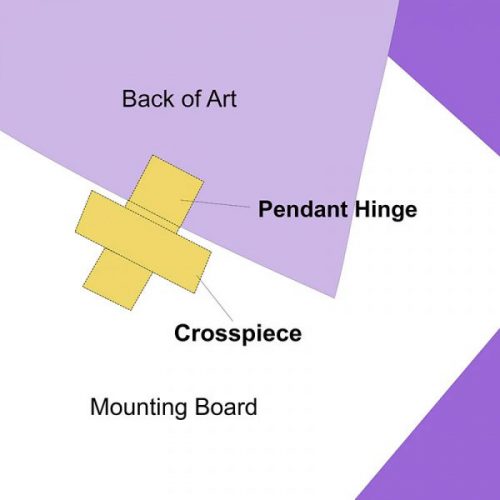From time to time, you may come across a piece of artwork that has been professionally framed and has a slight wave in it. We’re here to explain why…
The item has likely been framed using a conservation method called “hinging,” which the PPFA (Professional Picture Framing Association) recommends for valuable and limited-edition artworks. Hinging means securing the artwork to a backing board using small reversible hinges made of archival materials.
The alternative to this method is mounting. Mounting means permanently attaching artwork onto a backing board. (This is usually reserved for less valuable prints or prints in poor condition).
Hinging is preferred in most instances because it is easily reversible (maintaining the item’s value) and has a low risk of damage.

Mounting can provide a flatter result, but there is a greater risk of damaging the print, which cannot easily be removed from the board. This can decrease its value as it’s seen to be ‘permanently altered’. Mounting restricts the paper’s natural movement, which can cause stress to the paper. The print will go through a roller, and there’s some risk of damage; however, it will usually yield a flatter result.
Hinging does allow the print to move and breathe. Sometimes, this can be more visible than other times, depending on moisture in the air and art placement. Factors such as the paper stock and the saturation of ink on the paper also play a role. Just like your house expands and contracts, so does the paper.
Our answer is – whatever you like!
You have the information now, and it is your choice.
You’re not going to let me off that easy? Ok… My professional opinion is that if you have a valuable item, Hinge it.
It’s the conservative thing to do, and most of the time, it will look great.
Then, if you find it is too wavy to enjoy, you can bring it back to your framer, and they will mount it for you.
Contact us today at Ashgrove or Capalaba to discuss your options. Or better yet, make a booking with our Mobile Showroom and we’ll come to you.